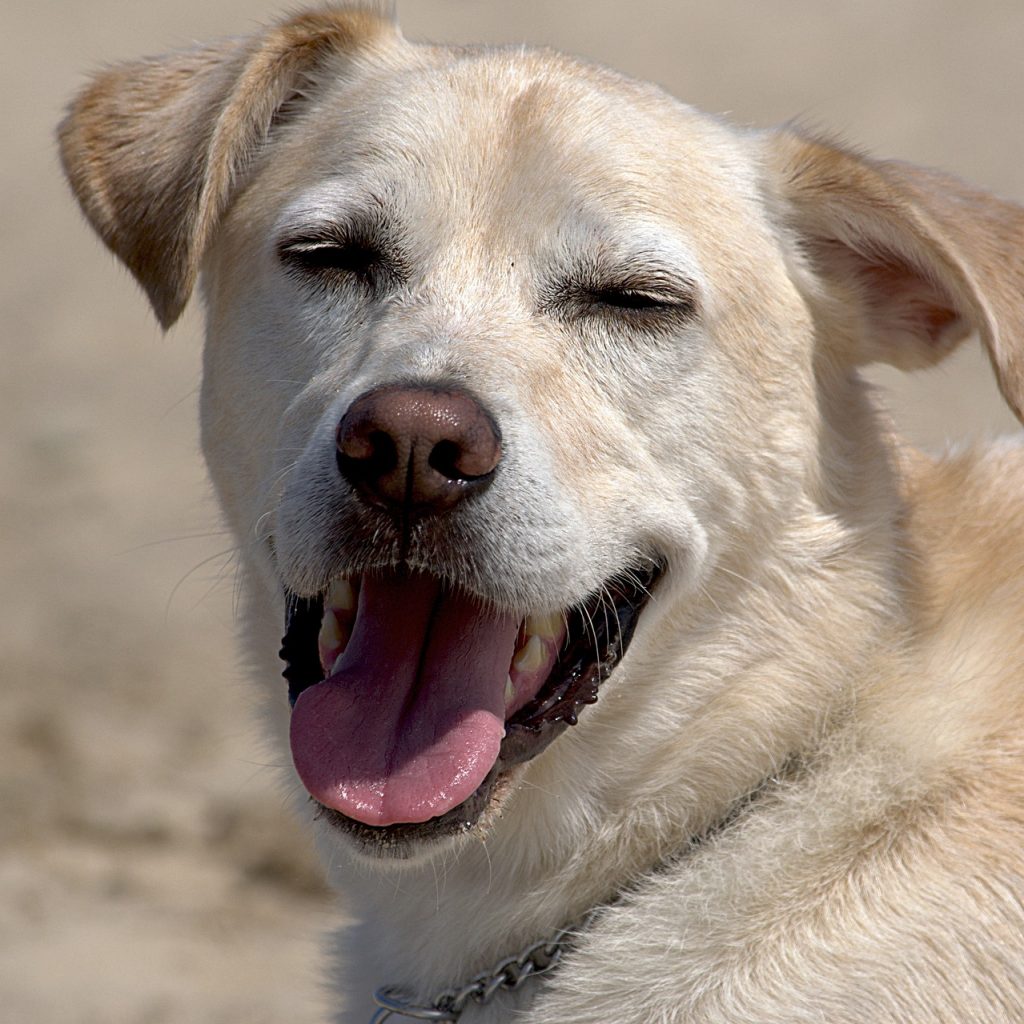Adventures Await: Exploring The Great Outdoors With Your Four-Legged Friend

Are you ready to embark on an unforgettable journey into the great outdoors with your loyal four-legged companion? Imagine the pure joy as you and your furry friend navigate through lush forests, climb majestic mountains, and soak up the beauty of nature together. From stunning hikes to thrilling camping trips, the world is your playground, just waiting to be explored. So grab your hiking boots, pack your pup’s favorite toys, and get ready for the adventure of a lifetime. The great outdoors is calling, and it’s time to answer with your best friend by your side.

Preparing for the Adventure
Choosing the Right Destination
When planning an outdoor adventure with your dog, it’s important to choose a destination that suits both your needs. Consider factors such as the level of difficulty, the length of the trail, and the type of terrain that you and your pup can handle. Research local hiking trails, parks, and dog-friendly beaches in your area to find the perfect destination that both you and your furry friend will enjoy.
Checking the Rules and Regulations
Before embarking on your outdoor adventure, familiarize yourself with the rules and regulations of the area you plan to visit. Each park or trail may have specific guidelines regarding dogs, such as leash requirements, designated dog-friendly areas, and restrictions during certain seasons. By understanding and following these rules, you can ensure a safe and enjoyable experience for everyone.
Getting the Necessary Permits
Some outdoor areas may require permits or passes for entry, especially if you plan on camping or hiking in designated wilderness areas. Research the specific requirements for your chosen destination and make sure to obtain any necessary permits in advance. This will help you avoid any last-minute surprises and ensure that you have a smooth and hassle-free journey.
Packing Essential Gear
Packing the right gear is crucial for a successful outdoor adventure with your dog. Make sure to bring essentials such as a sturdy leash, collapsible water bowl, waste bags, and a comfortable harness. Additionally, consider bringing a GPS tracker or ID collar for your dog in case they wander off. It’s also important to pack enough food, water, and any necessary medications for both you and your four-legged friend.
Preparing Your Dog
Preparing your dog for the adventure ahead is just as important as preparing yourself. Gradually increase your dog’s exercise and physical activity leading up to the trip to ensure they are fit and ready for the challenges ahead. This will help prevent any injuries or strain during the adventure. Additionally, make sure your dog is up-to-date on vaccinations and has received any necessary flea and tick prevention treatments.
Safety First
Training and Socializing Your Dog
Before venturing into the great outdoors, it’s essential to ensure that your dog is well-trained and sociable. Basic obedience commands such as sit, stay, and come are crucial for your dog’s safety and your peace of mind. Socialize your dog with other dogs and people to ensure they can handle encounters during your adventure. This will help prevent any unnecessary conflicts or accidents.
Keeping Your Dog Leashed
While it may be tempting to let your dog roam free, it’s important to keep them leashed during outdoor adventures. Many parks and trails have leash requirements, and keeping your dog on a leash ensures their safety and the safety of others. A sturdy leash and harness will give you control over your dog, preventing them from running into danger or approaching wildlife.
Recognizing and Avoiding Hazards
The great outdoors can present various hazards for you and your dog. Be aware of potential dangers such as steep cliffs, poisonous plants, and wildlife encounters. Keep an eye out for signs indicating areas to avoid, and always stay on established trails to minimize the risk of getting lost. By staying vigilant and being aware of your surroundings, you can protect both yourself and your furry companion.
First Aid Kit for Your Dog
Accidents can happen even during the most well-planned adventures. It’s important to have a first aid kit specifically designed for your dog. This kit should include items such as bandages, antiseptic wipes, tweezers for tick removal, and any necessary medications. Familiarize yourself with basic first aid techniques for dogs and be prepared to act quickly in case of an emergency.
Protecting Against Ticks and Fleas
When spending time outdoors, especially in wooded or grassy areas, it’s important to protect your dog against ticks and fleas. These pests can transmit diseases to your furry friend and cause discomfort. Make sure your dog is up-to-date on flea and tick prevention treatments and check them thoroughly for any signs of infestation after each outdoor excursion. Regular grooming and washing bedding can also help prevent these pests from hitching a ride back home.
Finding Dog-Friendly Accommodations
Hotels and Resorts
If you’re planning a trip that involves staying overnight, it’s important to find dog-friendly accommodations. Many hotels and resorts now offer pet-friendly rooms or have designated areas for dogs. When booking your stay, make sure to inform the establishment that you will be bringing your four-legged companion. This will ensure that you and your dog are both welcomed and accommodated during your stay.
Camping and RV Parks
For the ultimate outdoor experience, consider camping or staying at RV parks with your dog. Many campsites allow dogs but may have specific rules regarding leashing and noise control. Look for dog-friendly campgrounds that offer amenities such as pet waste stations, dog parks, and nearby trails for exploring. Camping with your dog can create unforgettable memories and provide them with a true sense of adventure.
Vacation Rentals
Another option for dog-friendly accommodations is renting a vacation home or cabin. Many rental properties now allow dogs, providing a comfortable and home-like environment for you and your furry friend. Look for properties with fenced yards or nearby walking trails for added convenience and enjoyment. Vacation rentals often offer more space and privacy, allowing you and your dog to relax and unwind after a day of outdoor exploration.
Dog-Friendly Trails and Campgrounds
When planning your outdoor adventure, seek out dog-friendly trails and campgrounds. These locations are designed to accommodate dogs and offer a variety of amenities such as waste stations, water sources, and even agility courses for your dog’s enjoyment. Research local parks and recreational areas to find the best options for you and your four-legged companion, ensuring a safe and welcoming environment for both of you.
Choosing the Right Activities
Hiking and Backpacking
Hiking and backpacking are popular outdoor activities that you can enjoy with your dog. Before hitting the trails, make sure to choose a route that matches your dog’s physical capabilities. Start with shorter hikes and gradually increase the distance as your dog becomes more experienced. Keep in mind that some national parks and wilderness areas may have restrictions on dogs, so plan accordingly.
Swimming and Water Activities
If your dog loves the water, consider including swimming or other water activities in your outdoor adventures. Find dog-friendly beaches, lakes, or rivers where your four-legged friend can cool off and have fun. Ensure that the water is safe for swimming and monitor your dog closely to prevent accidents or exhaustion. Life jackets are also available for dogs and can provide an extra layer of safety during water activities.
Trail Running and Jogging
For active dogs with plenty of energy, trail running or jogging can be a great way to exercise and bond. Look for dog-friendly trails or paths that are suitable for running, ensuring that the terrain is not too challenging for your dog’s paws. Start with shorter distances and gradually increase the intensity as your dog builds endurance. Remember to bring plenty of water and take frequent breaks to rest and hydrate.
Cycling and Mountain Biking
If you enjoy cycling or mountain biking, you can also include your dog in these activities. Special dog bike attachments such as bike trailers or bike leashes can allow your dog to join you on your adventures. Introduce your dog gradually to these activities, starting with short rides and gradually increasing the distance. Always prioritize your dog’s safety, and be aware of their limitations and comfort level when biking together.
Dog-Friendly Parks and Playgrounds
Sometimes, a leisurely stroll in a dog-friendly park or a visit to a dog playground is all you need to enjoy the outdoors with your furry friend. Look for parks that have designated off-leash areas or dog-specific amenities such as agility courses or doggy splash pads. These parks provide a safe and controlled environment for your dog to socialize, play, and burn off some energy.

Nourishing Your Adventurous Companion
Packing Food and Water for Your Dog
When planning outdoor adventures with your dog, it’s important to pack enough food and water to keep them nourished and hydrated throughout the journey. Bring along their regular food in sealed containers to ensure freshness, and pack enough portions for the duration of your trip. Additionally, carry ample fresh water for both you and your dog, as it may not always be readily available during your outdoor excursions.
Feeding Schedule and Portion Control
Maintaining a regular feeding schedule for your dog is crucial, even during outdoor adventures. Stick to their usual feeding routine as much as possible, providing regular meals at the appropriate times. Portion control is also important to prevent overfeeding or underfeeding. Measure out the portions beforehand and pack them in separate containers for easy access and portion control during your outdoor activities.
Choosing Nutritious and Dog-Safe Treats
Treats are an essential part of any outdoor adventure with your dog. They are not only great for rewarding good behavior or training but also provide additional nutrition and energy. Choose nutritious treats that are specifically formulated for dogs, avoiding any that contain harmful ingredients such as chocolate or xylitol. Pack a variety of treats to keep your dog interested and motivated throughout your outdoor excursions.
Managing Your Dog’s Diet on the Trail
When hiking or engaging in other outdoor activities, it’s important to carefully manage your dog’s diet. Avoid feeding your dog immediately before or after strenuous exercise, as this can lead to digestive issues. Instead, provide small, evenly spaced meals or snacks throughout the day to keep their energy levels stable. Be mindful of your dog’s behavior and adjust their food intake accordingly.
Hydration Importance for Dogs
Hydration is vital for both you and your dog, especially during outdoor adventures. Dogs can easily become dehydrated, particularly in hot or strenuous conditions. Make sure to bring enough fresh water for your dog and offer frequent opportunities for them to drink. Keep an eye out for signs of dehydration such as excessive panting, dry gums, or lethargy, and take breaks to allow your dog to rest and rehydrate.
Dealing with Outdoor Challenges
Weather Conditions and Seasonal Considerations
Outdoor adventures are often at the mercy of weather conditions and seasonal changes. Before embarking on your trip, check the weather forecast and plan accordingly. Dress yourself and your dog appropriately for the conditions, whether it’s applying sunscreen and bug repellent or bundling up in cold weather gear. Be prepared for unexpected weather changes and adjust your plans accordingly.
Keeping Your Dog Cool in Hot Weather
Hot weather poses risks for dogs, as they are more prone to heat exhaustion and heatstroke. Take precautions to keep your dog cool during outdoor adventures. Provide plenty of shade, carry a portable cooling mat or bandana, and avoid exercise during the peak heat of the day. Offer frequent water breaks and monitor your dog closely for signs of overheating such as excessive panting, drooling, or weakness.
Protection from Cold and Wet Conditions
Cold and wet conditions can also pose challenges for your dog. Keep them warm and dry by dressing them in a waterproof and insulated coat or sweater. Protect their paws from ice, snow, or freezing temperatures by using booties or paw wax. Be mindful of signs of hypothermia, such as shivering, lethargy, or difficulty walking, and take immediate action to warm your dog up if needed.
Dealing with Wildlife Encounters
When exploring the great outdoors, you may come across wildlife such as squirrels, birds, or even larger animals like deer or bears. It’s important to keep your dog under control and avoid any potential conflicts with wildlife. Keep your dog leashed and do not let them approach or chase wild animals. In areas known for dangerous wildlife, such as bear country, consider carrying bear spray or other deterrents for added safety.
Managing Waste and Cleaning Up
Responsible pet ownership means cleaning up after your dog, even when you’re enjoying the great outdoors. Bring plenty of waste bags and always pick up after your dog, disposing of the waste properly in designated trash bins. This helps protect the environment and ensures that the outdoor spaces remain clean and enjoyable for everyone. Remember, leaving behind waste can harm the ecosystem and pose health risks to other animals and humans.

Staying Mindful of Other Outdoor Enthusiasts
Respecting Other Campers and Hikers
When enjoying outdoor adventures with your dog, it’s crucial to show respect to fellow campers, hikers, and nature enthusiasts. Follow established trails, respect any signage or guidelines, and be mindful of other people’s space and privacy. Keep your dog under control at all times and be considerate of those who may not be comfortable around dogs. By being respectful, you can ensure a positive experience for everyone involved.
Proper Dog Etiquette in Public Spaces
In public spaces such as parks or beaches, it’s important to exhibit proper dog etiquette. Always keep your dog on a leash unless in designated leash-free areas, and clean up after them to maintain cleanliness and hygiene. Teach your dog basic commands such as “leave it” and “come” to avoid any unwanted interactions with people or other dogs. By practicing good etiquette, you can help foster a positive image of dog owners as responsible and considerate.
Being Prepared for Noisy or Crowded Areas
Outdoor attractions can sometimes be noisy and crowded, which can be overwhelming for your dog. Prepare your dog for a noisy environment by gradually exposing them to louder sounds in controlled settings. Use treats and positive reinforcement to reward calm behavior. Additionally, make sure your dog has a safe space or crate where they can retreat if they feel overwhelmed. It’s important to know your dog’s limits and provide them with a comfortable and stress-free experience.
Keeping Your Dog Calm and Controlled
Maintaining control over your dog is essential when exploring outdoor spaces. Ensure your dog is well-trained and responsive to commands, allowing you to manage their behavior in different situations. Practice recall exercises in controlled environments and reinforce obedience training during your outdoor adventures. By keeping your dog calm and controlled, you can prevent any potential accidents or disturbances.
Cleaning Up After Your Dog
One of the most important aspects of responsible dog ownership is cleaning up after your dog. Always carry waste bags and promptly clean up any messes your dog leaves behind. Dispose of the waste in designated trash bins or bring it back with you if no bins are available. Leaving dog waste behind not only negates the efforts of other responsible pet owners but can also harm the environment and spread diseases.
Capturing and Sharing the Moments
Choosing the Right Camera Gear
To capture the unforgettable moments you and your dog share during outdoor adventures, consider investing in the right camera gear. Choose a camera that suits your photography skills and preferences, whether it’s a DSLR, mirrorless camera, or a high-quality smartphone camera. Additionally, invest in accessories such as lens filters, tripods, and camera bags to protect your gear during your outdoor excursions.
Tips for Great Outdoor Photos
Taking great outdoor photos of your dog requires some skills and techniques. Opt for natural lighting, such as early morning or late afternoon, to avoid harsh shadows. Get down to your dog’s level to capture unique and engaging perspectives. Use the rule of thirds to compose your shots and make sure your dog’s eyes are in focus. Experiment with different angles, settings, and backgrounds to create stunning and memorable photographs.
Including Your Dog in the Shots
Including your dog in the photos allows you to capture their joy and excitement during outdoor adventures. Get creative with different poses and compositions, encouraging natural and candid moments. Use treats or toys to grab their attention and keep them engaged while taking photos. Remember to reward your dog for their cooperation and patience during the photoshoot.
Sharing Your Adventures on Social Media
Social media provides a platform to share your outdoor adventures with friends, family, and fellow dog lovers. Create a dedicated social media account for your dog and curate your posts to showcase your experiences and insights. Use relevant hashtags, engage with other users, and join dog-centric communities to connect with like-minded individuals. Remember to always be mindful of your dog’s privacy and safety when posting online.
Making Memories and Documenting Your Journeys
Beyond social media, consider other ways to document your adventures and make lasting memories with your dog. Keep a travel journal or scrapbook where you can write about your experiences, add photographs, and jot down special moments. Print and frame your favorite photos to display in your home and create a physical album for your dog’s adventures. These tangible reminders will allow you to cherish the memories you’ve made together.
Handling Emergencies
Knowing Where to Find Veterinary Care
When engaging in outdoor adventures, it’s important to be aware of nearby veterinary care options. Research and note down the contact information of veterinarians or emergency clinics in the area you are visiting. In case of an emergency or if you suspect your dog is unwell, you’ll have the peace of mind knowing where to seek professional help.
Recognizing and Responding to Common Injuries
While we always hope for the best, it’s crucial to be prepared for emergencies and common injuries that can occur during outdoor adventures. Learn how to recognize common injuries such as cuts, sprains, or heat exhaustion in dogs. Familiarize yourself with basic first aid techniques applicable to your dog’s injuries and have the necessary supplies ready in your pet first aid kit.
Building a Pet First Aid Kit
As a responsible dog owner, it’s essential to have a well-stocked pet first aid kit for emergencies. Your kit should include items such as bandages, antiseptic wipes, self-adhering wraps, scissors, and a thermometer. Additionally, include any specific medications or first aid items recommended by your veterinarian. Familiarize yourself with how to use each item in the kit and keep it easily accessible during your outdoor adventures.
Emergency Contact Information
In addition to veterinary care information, it’s important to have emergency contact information readily available. Keep a list of emergency numbers, including your regular veterinarian, the local animal control, and any nearby emergency clinics. This will ensure that you can quickly reach out for assistance if needed, especially in unfamiliar locations where time is of the essence.
Preparing for Worst-case Scenarios
While nobody wants to think about worst-case scenarios, it’s important to prepare for them. Have a plan in case your dog gets lost, such as carrying a recent photo and a detailed description of your dog. Consider microchipping your dog and updating your contact information in case they are found. It’s also a good idea to have a backup plan and emergency contacts who can help locate and retrieve your dog if necessary.
Basking in the Benefits of Outdoor Adventures
Physical Exercise and Mental Stimulation
Outdoor adventures provide dogs with ample opportunities for physical exercise and mental stimulation. Hiking, swimming, and engaging in various activities allow your dog to burn off energy, stay fit, and maintain a healthy weight. The mental challenges of exploring new environments and encountering different scents and sights also keep their minds sharp and stimulated.
Improving Bond and Strengthening Your Relationship
Outdoor adventures can deepen the bond between you and your four-legged friend. Spending quality time together in nature, exploring new places, and overcoming challenges can strengthen your relationship and create a strong sense of trust and companionship. The shared experiences and memories you create during outdoor adventures will foster a deeper connection between you and your dog.
Reducing Stress and Anxiety
Just like humans, dogs can experience stress and anxiety. The great outdoors provides a peaceful and calming environment that can help reduce stress levels in both you and your dog. The sights, sounds, and smells of nature have a soothing effect on the mind and can promote relaxation and a sense of well-being. Spending time outdoors with your dog can provide a much-needed break from the stresses of daily life.
Boosting Your Dog’s Confidence
Exploring the great outdoors can also build your dog’s confidence. Overcoming obstacles, encountering new situations, and successfully navigating unfamiliar environments can boost their self-assurance and resilience. As your dog becomes more comfortable with outdoor adventures, they will develop a sense of accomplishment and become more confident in various situations.
Creating Unforgettable Memories
Outdoor adventures with your dog create lasting memories that you will cherish for a lifetime. From the thrilling hikes and breathtaking views to the moments of joy and laughter shared with your furry friend, these experiences will leave an indelible mark on your heart. Whether it’s a weekend camping trip or an epic cross-country adventure, the memories you make with your dog will always hold a special place in your heart.